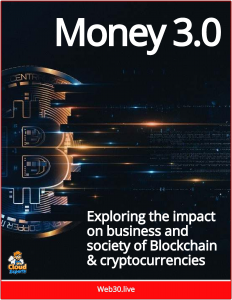Bitcoin: Beyond The Bubble
The year is 2040, and the world of money has transformed beyond recognition. Bitcoin, once dismissed as a speculative bubble, has transcended its volatile adolescence to become a cornerstone of a decentralized financial revolution.
Far from being just a digital currency, it has reshaped how we perceive value, trust, and economic systems.
The bubble didn’t burst—it evolved. Let’s explore the long-term future of money through the lens of Bitcoin’s enduring impact and the technologies it has inspired.
The Dawn of Decentralized Finance
In the early 2020s, Bitcoin was a polarizing force—celebrated by crypto enthusiasts as “digital gold” and derided by skeptics as a Ponzi scheme. But as centralized financial systems faltered under the weight of inflation, mismanagement, and exclusionary practices, Bitcoin’s promise of decentralization gained traction.
By 2030, over 2 billion people—many in underbanked regions—were using Bitcoin or its Layer-2 solutions like the Lightning Network for everyday transactions. From street vendors in Lagos to freelancers in Buenos Aires, Bitcoin became a borderless, censorship-resistant alternative to fiat currencies plagued by hyperinflation.
The key to Bitcoin’s staying power wasn’t just its scarcity (capped at 21 million coins) but its adaptability. The Lightning Network, once a clunky experiment, now processes trillions of microtransactions annually, enabling instant, near-free payments for everything from coffee to cross-border remittances.
Smart contracts on platforms like Stacks and RSK have turned Bitcoin into a programmable asset, supporting decentralized applications (dApps) that rival Ethereum’s ecosystem. Imagine a world where your Bitcoin wallet isn’t just a store of value but a hub for lending, insurance, and even voting—all without intermediaries.
The End of Central Banks?
By 2040, central banks are no longer the unchallenged arbiters of money. Bitcoin’s rise has forced a reckoning. Nations like El Salvador, which adopted Bitcoin as legal tender in 2021, paved the way for others to follow. By 2035, over 30 countries, primarily in the Global South, integrated Bitcoin into their monetary systems, either as a reserve asset or a parallel currency.
This shift wasn’t without chaos—legacy financial institutions resisted fiercely, and some governments attempted bans. But Bitcoin’s decentralized nature made it unstoppable. Peer-to-peer networks, powered by satellite-based nodes and mesh internet, ensured that even authoritarian regimes couldn’t fully suppress it.
Central banks haven’t vanished, but their role has diminished. Stablecoins pegged to fiat currencies still exist, but they’re increasingly overshadowed by Bitcoin-backed stablecoins and tokenized assets on Bitcoin’s blockchain. The International Monetary Fund, once a critic, now advises member states on integrating crypto into monetary policy. The dollar, euro, and yuan still dominate trade, but Bitcoin is the neutral reserve asset for a multipolar world—a hedge against geopolitical instability and currency wars.
The Rise of the Sovereign Individual
Bitcoin’s greatest legacy is empowering the individual. In 2040, the concept of a “bank account” feels archaic. Self-custody wallets, secured by quantum-resistant cryptography, give people direct control over their wealth.
Multisignature wallets and decentralized identity systems ensure that no government or corporation can freeze your assets or track your transactions without consent. Privacy-focused innovations like CoinJoin and Taproot have made Bitcoin transactions nearly untraceable when desired, balancing transparency with personal sovereignty.
This shift has profound societal implications. In a world where money is no longer controlled by centralized gatekeepers, economic power is redistributed. Artists in Jakarta can crowdfund projects directly in Bitcoin, bypassing exploitative platforms.
Activists in oppressive regimes can receive donations without fear of seizure. Even taxation has evolved—governments increasingly rely on voluntary smart contracts and blockchain-based auditing to collect revenue, as cashless economies make traditional tax evasion nearly impossible.
The Convergence of AI and Bitcoin
The fusion of artificial intelligence and Bitcoin is another game-changer. By 2040, AI-driven wallets autonomously optimize your financial portfolio, swapping Bitcoin for tokenized assets like real estate or renewable energy credits based on market signals.
Decentralized AI oracles, running on Bitcoin-compatible networks, provide real-time data to smart contracts, enabling complex financial instruments like weather-based crop insurance or peer-to-peer energy trading. Imagine a farmer in Kenya using Bitcoin to buy solar credits from a neighbor’s microgrid, with an AI ensuring fair pricing and instant settlement.
AI also enhances Bitcoin’s security. Machine learning algorithms monitor the blockchain for anomalies, thwarting 51% attacks before they can materialize. Meanwhile, AI-driven mining operations, powered by renewable energy, have made Bitcoin mining more sustainable, silencing critics who once decried its environmental impact. By 2040, over 80% of Bitcoin mining runs on solar, wind, and geothermal energy, with miners competing to innovate rather than consume.
Challenges on the Horizon
Bitcoin’s ascent hasn’t been flawless. Scalability remains a hurdle, even with Layer-2 solutions. The network handles millions of transactions per second, but peak demand during global crises—like the 2032 climate refugee crisis—can still cause congestion.
Governance disputes persist, with purists clashing over protocol upgrades like quantum-proofing or expanding Bitcoin’s scripting capabilities. And while decentralization is Bitcoin’s strength, it’s also a vulnerability: bad actors exploit pseudonymous transactions for illicit purposes, forcing a delicate balance between privacy and regulation.
Geopolitically, Bitcoin is a double-edged sword. It empowers individuals but destabilizes weaker economies reliant on fiat control. Some nations have embraced it; others, like the Pan-Asian Economic Bloc, have launched competing central bank digital currencies (CBDCs) to counter its influence. These CBDCs, however, lack Bitcoin’s trustless ethos, and their adoption remains limited outside authoritarian states.
The Future of Money: A Pluralistic Vision
Bitcoin hasn’t replaced fiat—it’s redefined it. By 2040, money is no longer a monolith but a pluralistic ecosystem. Bitcoin coexists with tokenized assets, CBDCs, and even barter-based systems in some communities.
Its blockchain serves as the backbone for a global, interoperable financial network, where value flows seamlessly across borders and asset classes. The dream of a cashless society has materialized, but not as governments envisioned—it’s decentralized, transparent, and user-driven.
The bubble of the 2010s was just the beginning. Bitcoin’s true revolution lies in its ability to adapt, inspire, and empower. It’s not just money; it’s a protocol for trust, a catalyst for innovation, and a blueprint for a future where individuals, not institutions, hold the keys to their economic destiny. As we stand on the cusp of this new era, one thing is clear: Bitcoin is no longer a gamble—it’s the foundation of the future of money.




